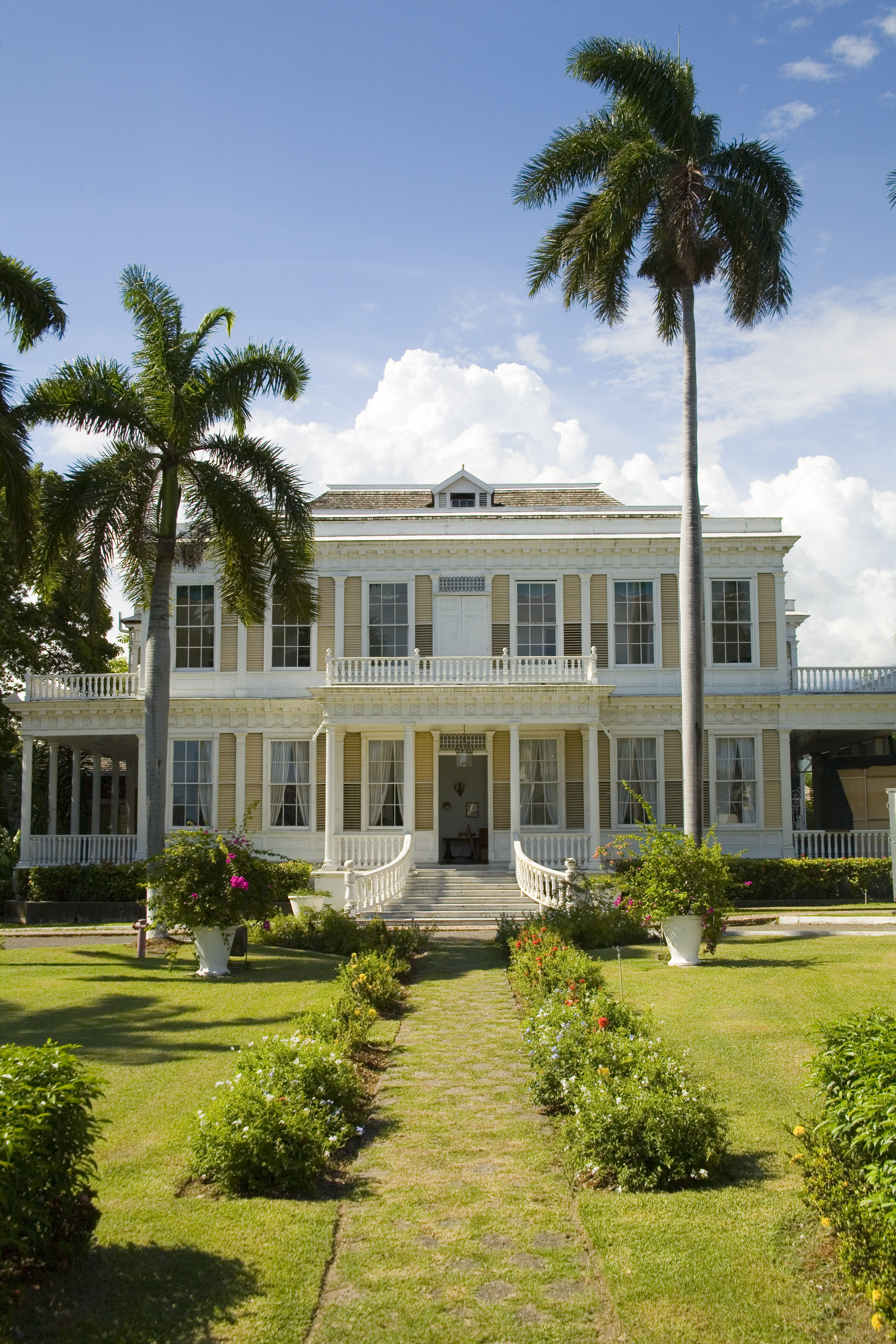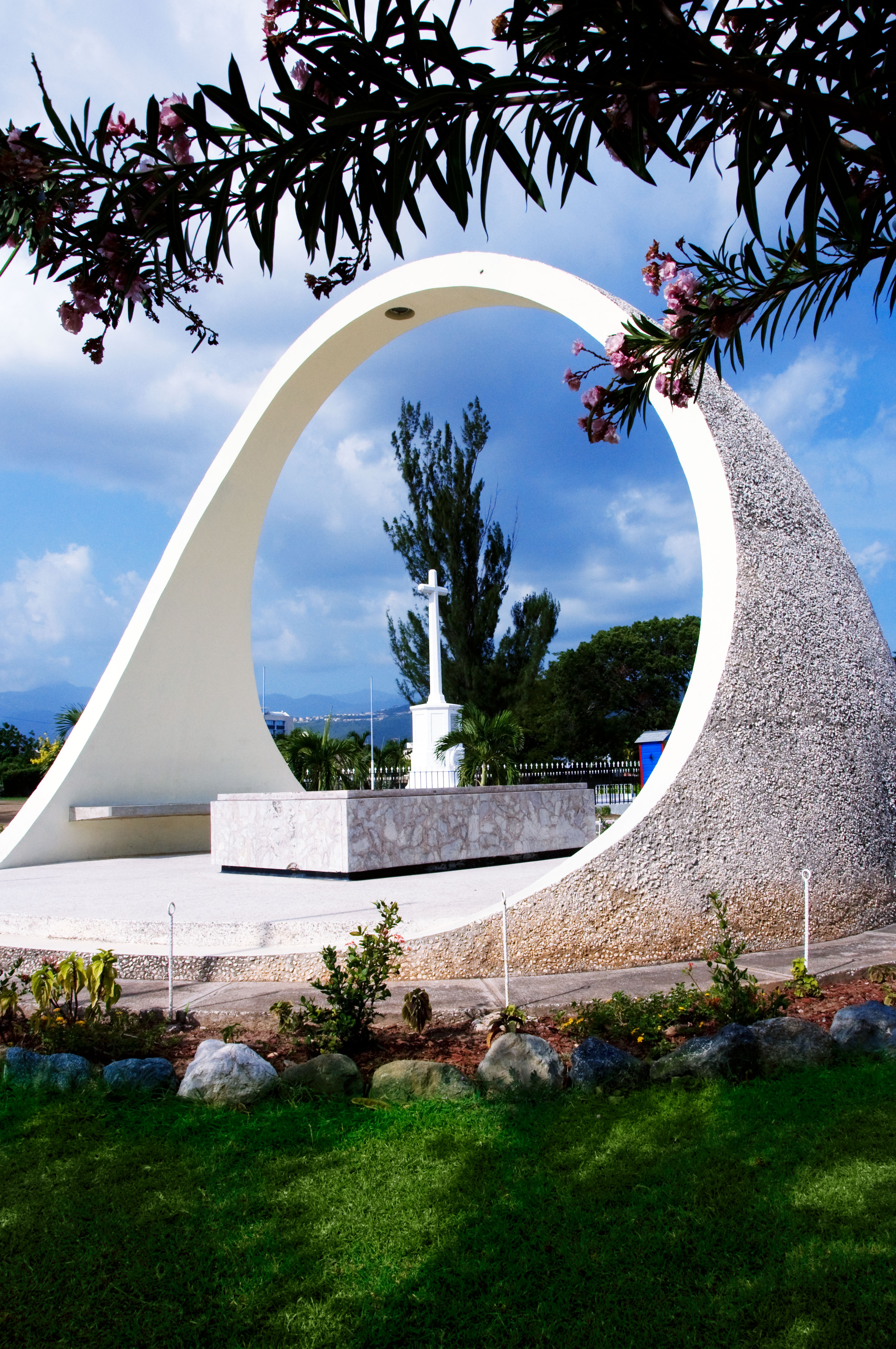-
Hope Botanical Gardens
In 1881, two hundred (200) acres of Hope Estate was purchased by the Government to establish an experimental garden. Fifty (50) acres of the land were devoted to the development and distribution of new varieties of sugar cane, and ten (10) acres for planting teak, Liberian Coffee, Trinidad Cocoa and pineapples.
 (via)
(via)
Adjoining the Hope Botanical Gardens is the Hope Zoo which has many animals from several parts of the world. The Hope Botanical Gardens and the Hope Zoo are located on Old Hope Road in the parish of St. Andrew.
-
St. Andrew Parish Church
The St. Andrew Parish Church was founded in 1664 and is one of the oldest churches in the country. It was founded some four years after Britain established civil administration following conquest of the island from Spain. It is named after the apostle Andrew, the patron saint of Scotland.
The Church has some of the oldest and beautiful monuments and memorials of any church in Jamaica. Stained glass windows, installed after 1879, are an important part of the memorials of the church. The present organ, the fourth in the church’s history, was installed in 1978. The cemetery is one of the oldest in continuous use in the island and many prominent persons associated with the history of the church are interred within its boundaries.
-
Jewish Cemetery
The old Jewish Cemetery at 1 Hunt’s Bay in Kingston, is an important landmark in the history of Jamaica as it is the oldest denominational cemetery on the island and is one of the oldest Jewish cemeteries in the Western Hemisphere.
It was founded by the Jews of Port Royal in the latter part of the seventeenth century when a Jewish community flourished there. Those buried in the cemetery were brought by rowing boats from Port Royal. It appears that no bodies were taken to the Hunt’s Bay cemetery after the eighteenth century since the latest tomb, that of Moses Ferro, bears the date 1771. The oldest tomb is believed to be that of Abraham Gabay who died 6 NISAN 5432 (6th April, 1672).
-
Devon House
One of Jamaica’s most celebrated historical landmarks, the Devon House Mansion is the architectural dream of Jamaica’s first black millionaire George Stiebel. Stiebel was among three wealthy Jamaicans who constructed elaborate homes during the late 19th century at the corner of Trafalgar Road and Hope Road, which fittingly became known as the Millionaires Corner. Daniel Finzi and the Verleys were the other families that resided in the area, however, both homes were eventually demolished to make way for development ventures.. Stiebel’s legacy lives on with the beautifully maintained Devon House, which was declared a national monument in 1990 by the Jamaica National Heritage Trust.

The magnetic appeal of Devon House is not just in the beautifully restored rooms, with their antique furniture and decorations, but also in the shops selling Jamaican craft items, the restaurants serving authentic Jamaican food, and the ice cream parlor, ranked as the 4th best place in the world to eat ice cream by National Geographic.
-
The National Heroes Park
The area on which the National Heroes Park now stands was once one of the most popular spots in Kingston. For 101 years, the land was the centre for horse racing in Jamaica. It was also the site for other sporting activities such as cricket and cycle racing. Being a place where people naturally gathered, the area was also the venue for travelling circuses that visited the island from time to time.

In 1818, the Kingston Council purchased the property for £985 and 10 shillings. The site was officially renamed the National Heroes Park in 1973 and is now a permanent place for honouring our heroes whose monuments are erected in an area known as the Shrine. Another section, reserved for Prime Ministers and outstanding patriots, adjoins the Shrine area, to the north.
